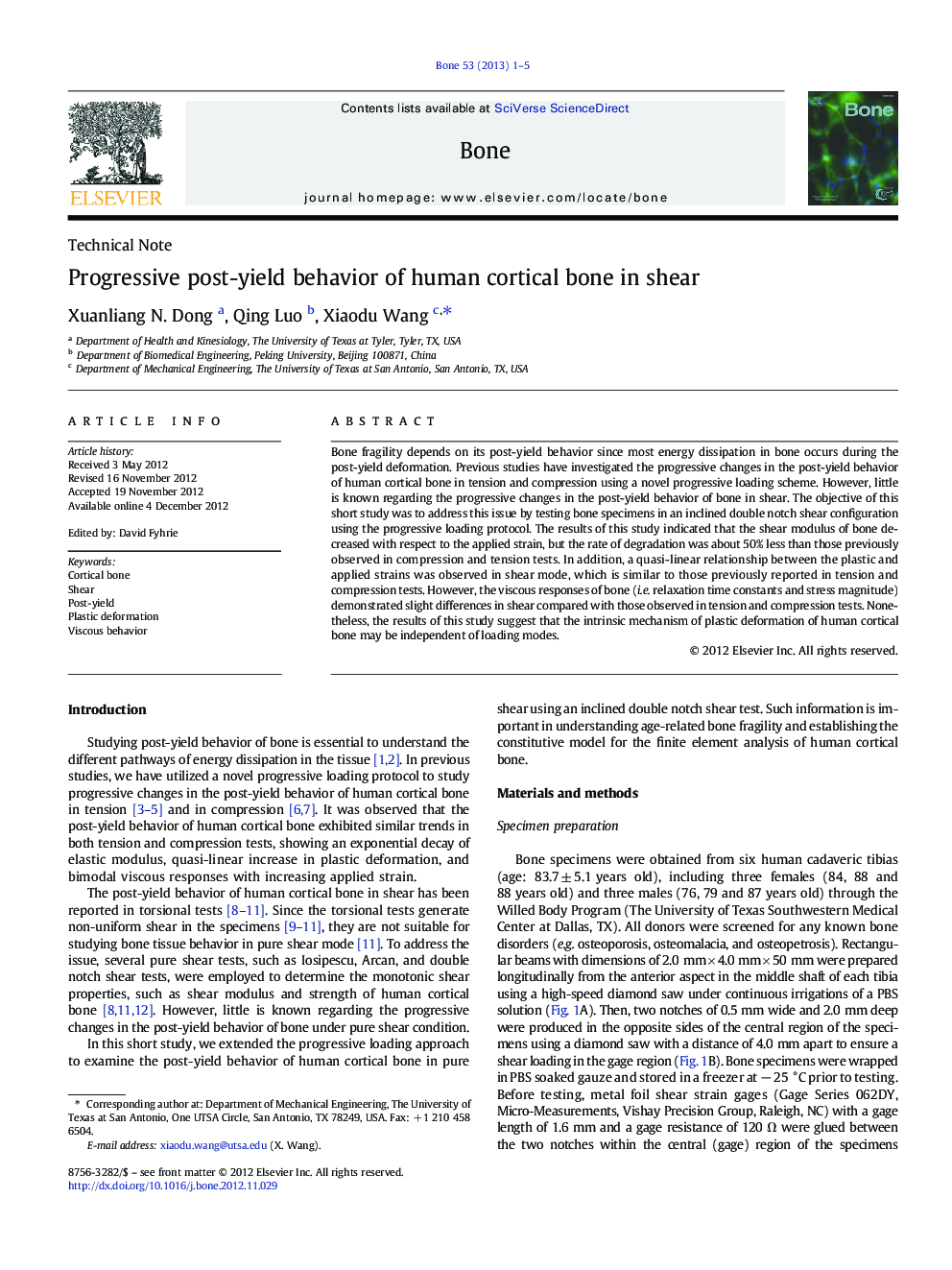| Article ID | Journal | Published Year | Pages | File Type |
|---|---|---|---|---|
| 5891242 | Bone | 2013 | 5 Pages |
Abstract
Bone fragility depends on its post-yield behavior since most energy dissipation in bone occurs during the post-yield deformation. Previous studies have investigated the progressive changes in the post-yield behavior of human cortical bone in tension and compression using a novel progressive loading scheme. However, little is known regarding the progressive changes in the post-yield behavior of bone in shear. The objective of this short study was to address this issue by testing bone specimens in an inclined double notch shear configuration using the progressive loading protocol. The results of this study indicated that the shear modulus of bone decreased with respect to the applied strain, but the rate of degradation was about 50% less than those previously observed in compression and tension tests. In addition, a quasi-linear relationship between the plastic and applied strains was observed in shear mode, which is similar to those previously reported in tension and compression tests. However, the viscous responses of bone (i.e. relaxation time constants and stress magnitude) demonstrated slight differences in shear compared with those observed in tension and compression tests. Nonetheless, the results of this study suggest that the intrinsic mechanism of plastic deformation of human cortical bone may be independent of loading modes.
Related Topics
Life Sciences
Biochemistry, Genetics and Molecular Biology
Developmental Biology
Authors
Xuanliang N. Dong, Qing Luo, Xiaodu Wang,
